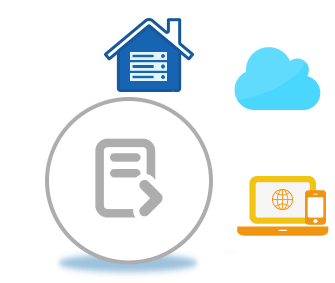Merge TSV Documents Online via Merger App or using C++
Develop powerful C++ based TSV document merging application. Combine multiple TSV documents into single one online for free via app. Save merged TSV file as PDF, Images, Word, Excel, PowerPoint & many other formats online.
Merge TSV Files Online using App
- Upload TSV files to merge them into single one
- Enter the parameters like selection from dropdown
- Save to required format: XLSX, PPTX, PDF, DOCX, DOC, Image, HTML, and others
- Click the “Merge” button to Merge TSV into desired format
- Download the merged TSV file
- View and get the single merged TSV file
Merge TSV File via C++
- Load both TSV using Workbook objects.
- Select the one Workbook as the base file.
- Use Combine method using base obect and second TSV file object as parameter.
- Call Save method and get the merged TSV files into one.
C++ Code: Merge TSV Spreadsheets
Develop TSV File Merger using C++
Need to develop C++ utility app to easily merge multiple TSV files? With
Aspose.Cells for C++
, child API of
Aspose.Total for C++
, any C++ developer can integrate the above API code to concatenate documents easily. Powerful C++ library for merging documents supports many popular formats including TSV format.
C++ Merging Library for TSV Files
There are options to install Aspose.Cells for C++ or Aspose.Total for C++ onto your system. Please choose one that resembles your needs and follow the step-by-step instructions:
- Install a NuGet Package . See Documentation
- Install the library using Package Manager Console within Visual Studio IDE
System Requirements
You can use this C++ library to develop software on Microsoft Windows, Linux and macOS operating systems:
- GCC >= 7.5.0 and Clang >= 3.9.1 are required for Linux
- Xcode >= 12.5.1, Clang and libc++ are required for macOS
If you develop software for Linux or macOS, please check information on additional library dependencies (fontconfig and mesa-glu open-source packages) in [Product Documentation](https://docs.aspose.com/cells/cpp/system-requirements/).
FAQs
- Can I use above C++ code in my application?Yes, you are welcome to download this code. One can develop professional solution to combine TSV using C++. Use TSV merging API to develop high-level, platform independent software in C++.
- Is this document merging App work only on Windows?You have the flexibility to initiate document merging from any device, irrespective of the operating system it runs on, whether it be Windows, Linux, Mac OS, or Android. All that's required is a contemporary web browser and an active internet connection.
- Is it safe to use the online app to combine multiple TSV documents?Of course! The output files generated through our service will be securely and automatically removed from our servers within a 24-hour timeframe. As a result, the download links associated with these files will cease to be functional after this period.
- What browser should to use App?You can use any modern web browser like Google Chrome, Firefox, Opera, or Safari for online TSV document merging.
- How can I merge multiple TSV files?Start by uploading one or more files you want to merge. You can either drag and drop your TSV files or simply click inside the white area. Afterward, click the 'Merge' button, and our merger will quickly process the uploaded files.
- How long does it take to merge the TSV files?This merging application operates quickly, It may take a few seconds to upload the files and merge them.
Explore File Merger Options with C++
What is TSV File Format?
A tab-separated values (TSV) file is a straightforward text format used to store data in a structured manner, resembling a table found in a database or spreadsheet. Each row of the table is stored as a separate line, and the columns within the row are separated by a tab character. This format offers simplicity and ease of processing, as TSV files can be manipulated using a text editor or a basic script. Although there are no formal standards governing TSV files, they have gained extensive popularity and are widely supported by numerous applications.
TSV files provide several advantages for data storage and manipulation. Firstly, their plain text format ensures compatibility across different platforms and operating systems. Whether you’re using Windows, macOS, or Linux, TSV files can be easily accessed and processed without the need for specialized software. Additionally, the tab character used as a delimiter makes it effortless to parse and extract specific data from TSV files programmatically.
Moreover, TSV files facilitate data exchange between different applications. Many software tools, such as spreadsheet programs, database management systems, and statistical analysis software, offer built-in support for importing and exporting data in the TSV format. This enables seamless interoperability, allowing users to transfer data between diverse systems without loss of information.




